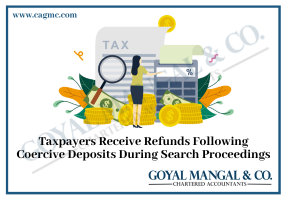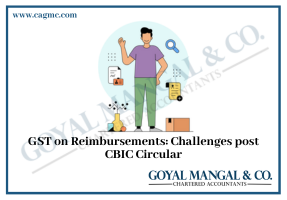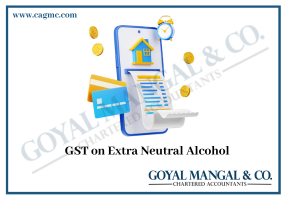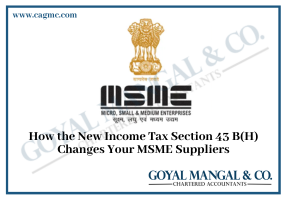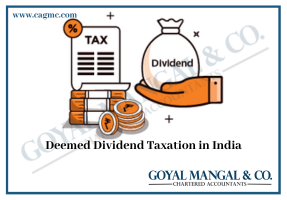
The Annual Information Statement (AIS) is an important document that provides transparency and accountability for tax-exempt organizations. It is a requirement for certain types of nonprofit organizations that are recognized as tax-exempt by the Internal Revenue Service (IRS). While many organizations diligently file their AIS each year, some may be surprised to find unexpected information in their statement. In this article, we will discuss the things that you might get shocked to find in your AIS.
|
Table of Contents |
What is AIS?
The Annual Information Statement (AIS) is a summary of information about a taxpayer given in Form 26AS. AIS will display interest, dividends, TDS/TCS details, stock market transactions, mutual fund transactions, etc. AIS displays both the adjusted value (i.e. the value after considering the feedback from the taxpayer) and the reported value (the value reported by the reporting entities) for each type of information like Statement of Financial Transaction (SFT), TDS, and various other information.
Objectives of AIS
The Annual Information Statement (AIS) is introduced with the aim of –
- Displaying complete information to taxpayers and capturing their online feedback
- This step will facilitate voluntary compliance and eliminate the understatement of income by taxpayers
- Enable hassle-free return prefilling
- Discourage non-compliance
Features of AIS
The main features of the Annual Information Statement (AIS) include:
- Online feedback is available to submit AIS information and download information in PDF, JSON, and CSV file formats.
- The AIS has access to new information– securities transactions, interest, foreign transfer information, dividends, mutual fund transactions, etc.
- Overview of AIS information in the form of Taxpayer Information Overview (TIS) to facilitate the submission of the return (all data will be pre-filled in the return).
- AIS Utility is also available which will enable taxpayers to view AIS and upload feedback in an offline manner.
How to check your Annual Information Statement (AIS)?
Step 1: Log in to the Income Tax e-filing portal at www.incometax.gov.in to access your Annual Information Statement (AIS). Click on ‘Services’ > ‘Annual Statement’.
Step 2: Click the “Continue” button.
Step 3: It will redirect you to the portal. Then you can view the Taxpayer Information Summary (TIS) and the AIS on the home page of AIS.
Step 4: The next step includes selecting the relevant financial year and clicking on the relevant tiles to view the TIS and AIS.
Step 5: You can also download TIS and AIS.
Some shocking things you might find in your Annual Information Statement (AIS)
Here are some things that you might get shocked to find in your Annual Information Statement (AIS).
- High Administrative Expenses: One of the most common surprises that organizations find in their AIS is a high percentage of administrative expenses. Donors and other stakeholders expect nonprofit organizations to use their resources effectively and efficiently to fulfill their mission. Administrative expenses, such as salaries, office rent, and office supplies, are necessary to run the organization, but they should be kept to a minimum. If an organization has a high percentage of administrative expenses in relation to their program expenses, it may raise questions about the organization’s effectiveness and efficiency.
- Large Salaries: Another surprise that organizations may find in their AIS is large salaries for key employees or executives. While it is important to compensate employees fairly for their work, donors and other stakeholders may be concerned if the organization’s key employees are receiving salaries that are significantly higher than market rates. Large salaries may raise questions about the organization’s priorities and whether it is using its resources in the best interests of its mission.
- Related Party Transactions: Related party transactions are transactions between a nonprofit organization and a person or entity that has a close relationship with the organization, such as a board member or a family member of a board member. These transactions may include loans, leases, or purchases of goods or services. While related party transactions are not necessarily illegal or unethical, they can raise questions about conflicts of interest and whether the organization is using its resources in the best interests of its mission.
- Inaccurate or Incomplete Information: Another surprise that organizations may find in their AIS is inaccurate or incomplete information. The AIS is an important document that provides transparency and accountability for tax-exempt organizations, and it is important that the information in the statement is accurate and complete. If an organization finds errors or omissions in their AIS, it is important to take corrective action to ensure that future statements are accurate and complete.
- Lack of Programmatic Impact: Finally, organizations may be surprised to find that their AIS does not adequately demonstrate their programmatic impact. Donors and other stakeholders expect nonprofit organizations to make a difference in the communities they serve, and the AIS is an opportunity to demonstrate that impact. If an organization’s AIS does not adequately demonstrate its impact, it may raise questions about the organization’s effectiveness and whether it is using its resources in the best interests of its mission.
The Information displayed in AIS
The information displayed in AIS is divided into two parts-
Part A contains General Information like an Aadhaar number, name, and date of birth/incorporation, PAN, and contact details of the taxpayer.
Part B contains:
- TDS/TCS Information– TDS/TCS-related information is displayed here. TDS/TCS Information Code, Information Description, and Information Value will be displayed.
- SFT Information– Information received from reporting entities as part of the Statement of Financial Transaction (SFT) will be displayed. The SFT code, Information Description, and Information value are made available.
- Paying taxes– Shows information related to taxes, such as withholding tax and self-assessment.
- Demand and Refund– Details of demand raised and refund initiated (AY and amount) during the financial year.
- Additional Information– Details of information obtained from other sources such as Schedule II Salary, Refund Interest, Foreign Remittance/Purchase of Foreign Currency, etc. are displayed here.
Final words
The Annual Information Statement (AIS) is, therefore, an important document that provides transparency and accountability for tax-exempt organizations. While some organizations may be surprised to find unexpected information in their AIS, it is important to use the information to improve the organization’s effectiveness and efficiency. By addressing issues such as high administrative expenses, large salaries, related party transactions, inaccurate or incomplete information, and lack of programmatic impact, organizations can build trust with donors and other stakeholders and ensure that they are using their resources in the best interests of their mission.

